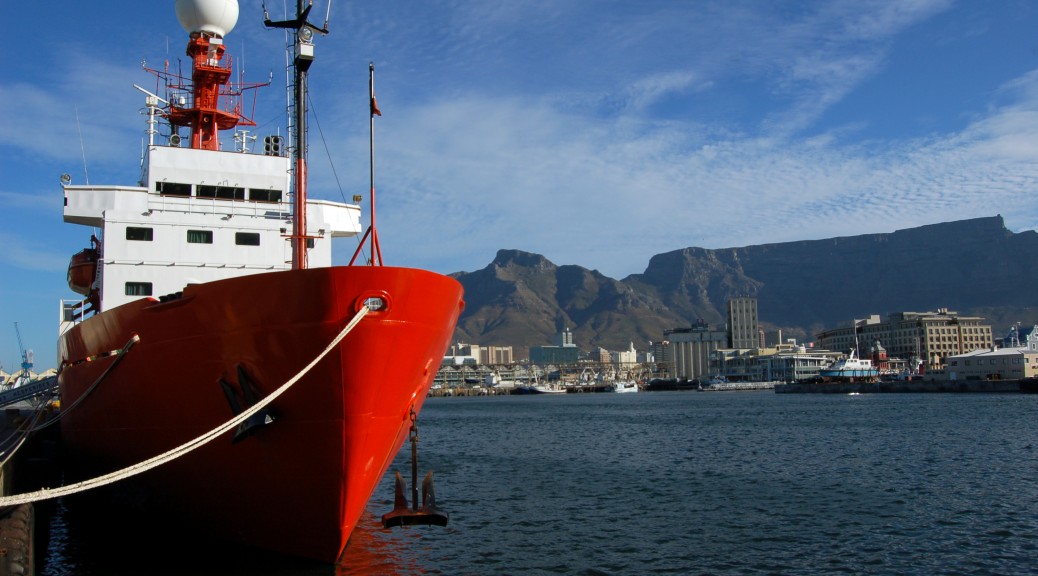Cape Town was filled with chattering Spanish researchers this week, on shore between legs of a circumnavigation that will take them from Cádiz to Sydney and back, by way of the Panama Canal. They chewed on biltong and rode the cable car to the top of Table Mountain. Now they are loading water sampling tubes and unpacking their laboratory equipment on the B.I.O. Hespérides, docked here in Cape Town until this afternoon, when we head for Perth.
The Hespérides, a Spanish icebreaker, is taking part in the Malaspina expedition, a multi-agency, multi-disciplinary research voyage which Spanish oceanographers hope will give them a glimpse of how the world’s oceans are changing and help them forge connections with other scientists. Spain’s National Research Council (CSIC) counts hundreds of scientists from over a dozen institutions as collaborators; about three dozen at a time will live and work onboard the Hespérides during the expedition, which launched late last year from Cádiz.
Between legs, when they’re not seeing the sights, the scientists open the ship to visitors and give tours, telling stories from their earlier visit to Rio de Janeiro and from the historic expedition that is the namesake of this one.
Any scientist who thinks their manuscripts have been held hostage by peer reviewers can relate to Alessandro Malaspina, an Italian who sailed for the Spanish navy in the 18th century. Despite leading a successful five-year expedition in which his ships surveyed the natural history, botany, and geography of Spain’s widespread dominions, Malaspina was imprisoned before he was able to publish most of his results.
Spain’s government did make use of the nautical charts his expedition produced, and more than 1,000 paintings of birds, port cities, plants, and indigenous residents now reside in Madrid, where they serve as an 18th-century snapshot of Spain’s empire at its height. But the expedition’s scientific impact factor, to use the modern term, was small. Malaspina’s return to Spain coincided with the French Revolution and tense royal aides were in no mood to hear his advice that Spain give more political power to its colonies and reach out to them as equal partners in global trade. Just over a year after his return, Spain jailed its scientific Columbus. He died in exile in Italy 14 years later.
In the last couple of years Spanish scientists have been re-examining Malaspina’s legacy. They’ve also been extracting more funding than ever from the central government – this year excluded, despite across-the-board cuts – and reaching out to their colleagues in other countries to raise their own impact factor. On this expedition, their goals are different from Malaspina’s: instead of mapping coastlines and harbors, they’ll be testing floating sensors to complement satellite observations of the sea surface. Instead of painting exotic birds, they’ll be counting plankton at 4,000 metres below sea level.
I’ll be reporting on their expedition and occasionally comparing it to Malaspina’s, both in the details of how marine research works on a day-to-day basis and how scientists conduct international collaborations.
But I’ll start with a simpler comparison: instead of throwing my dispatches to passing ships for delivery on return to port, I’ll be using a satellite connection. We’ll find out soon which method is more reliable!
Image: B.I.O. Hespérides in Cape Town / Lucas Laursen
